
Higley
possibly my most ambitious, and definitely most personal series - tracing the shift of the "american dream" based on my family's history in the east valley of phoenix, arizona in a small farming-community turned track-home mega suburb.
2004-2007
“Why do we take pictures? To preserve memories? Stop time? Tell stories? Andrew Phelps’ photographs of Higley, Arizona do all of these things. But most of all they make me want to go out into the world. Stripped of the usual tendency toward cynical sensationalism, Phelps’ pictures depict Higley with a mixture of clarity and affection. After looking at this remarkable book, I feel like going outside to chat with my neighbour.”
Alec Soth
Higley, Arizona is disappearing.
Week by week, a township, once at the center of a farming expanse, is steadily loosing ground to the exploding metropolis known as the “greater Phoenix area”.
Two-lane, dirt-shouldered, rough paved roads with names like Ellsworth, Ray, or Pecos are being widened and annexed by entrance drives to bedroom communities with promising names like “Heritage Springs” or „Sunset Haven“
Feed lots and grain silos have been replaced by strip malls and fast-food chains. Track-housing subdivisions are replacing homesteads founded after WW 2 by service-men who came to build airplanes and stayed to grow citrus, cotton, alfalfa and corn, or to tend dairy-farms. Forced to sell out due to inflated property taxes and the urban encroachment, these vast lots of land, along with their history are loosing the battle against a homogenous America. These photographs of Higley and the surrounding towns of Gilbert, Chandler and Queen Creek are an on-going documentation of this micro-cosmos of globalization.
AP 2007
Scroll down to read interviews from Wichert Magazine and Lens Culture







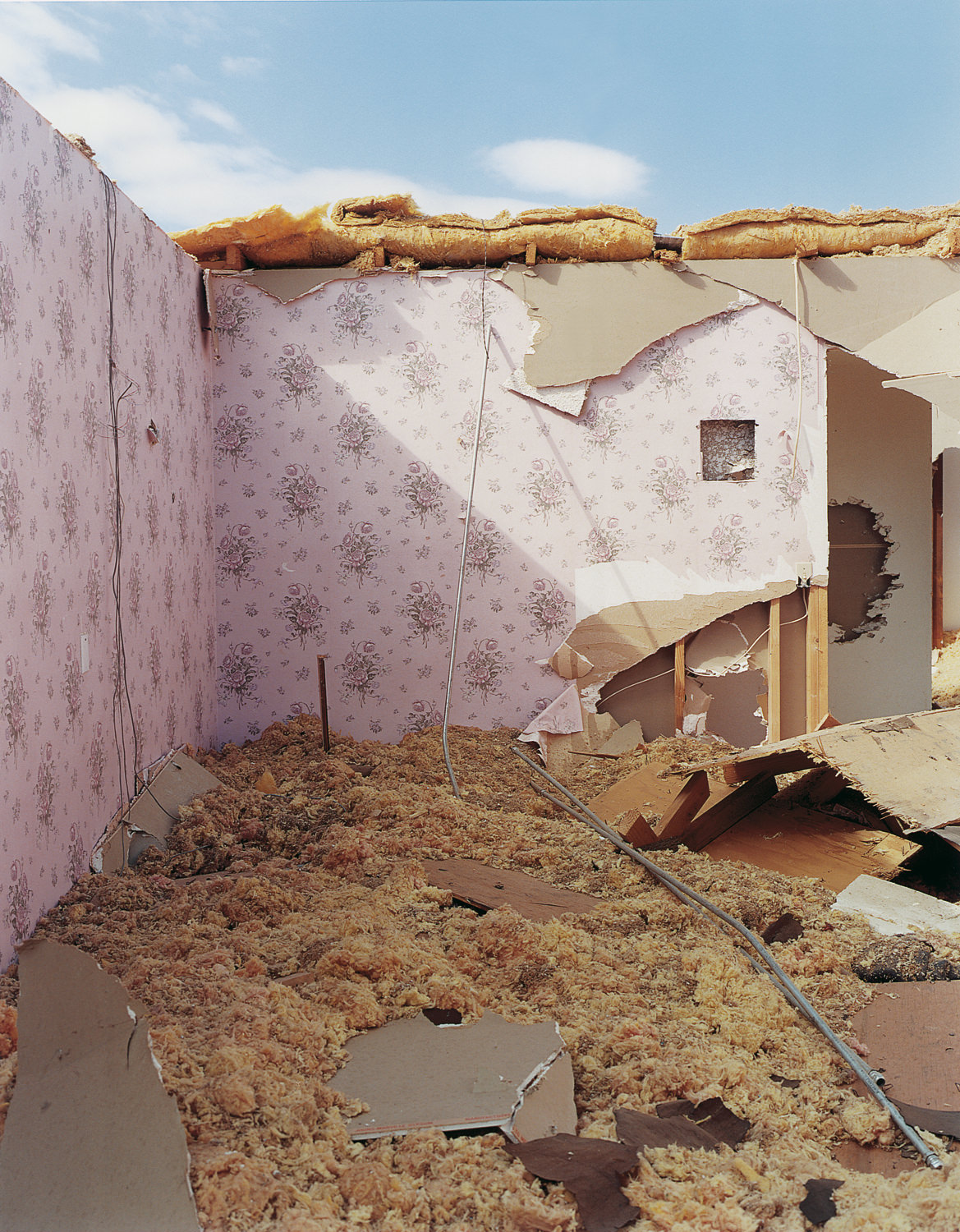




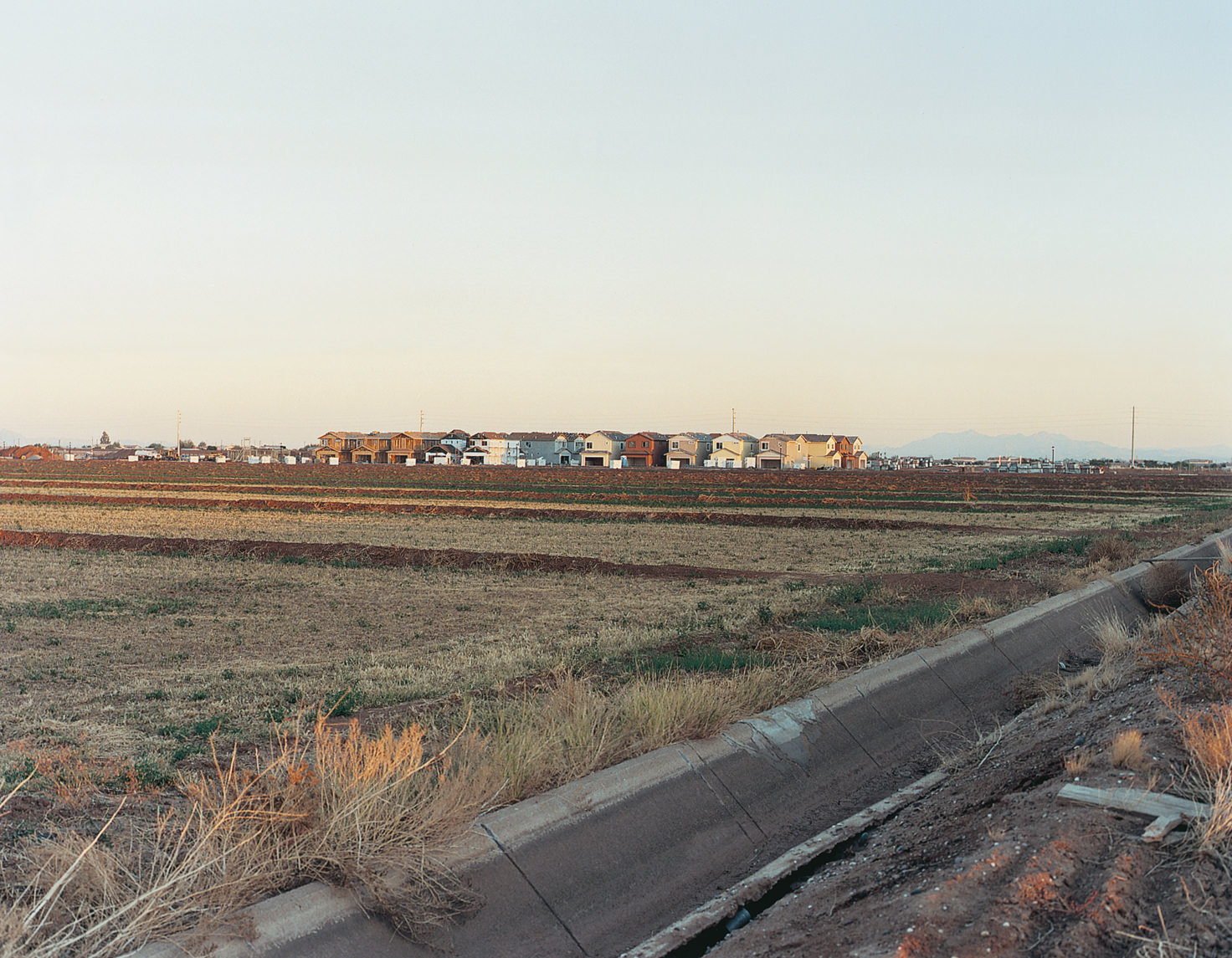










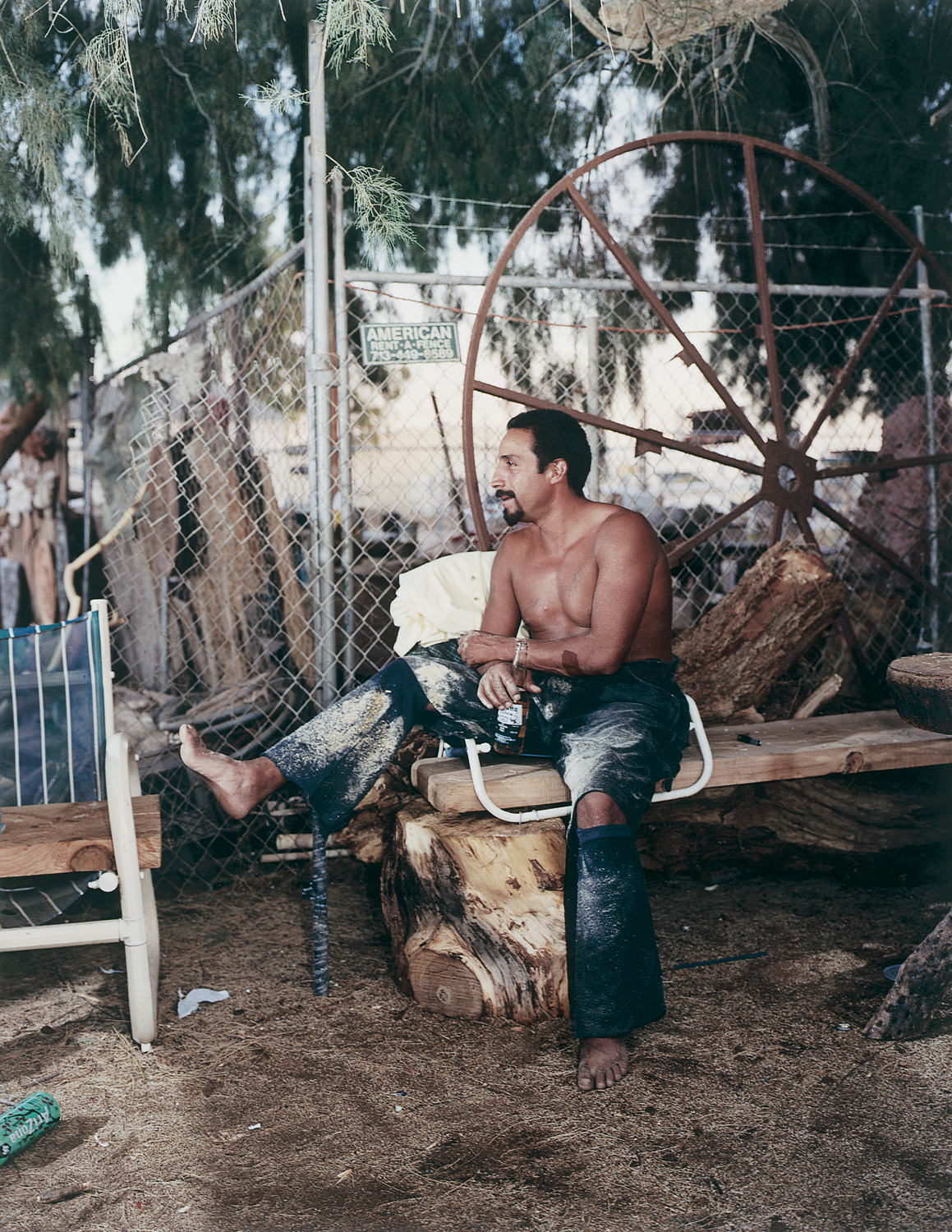



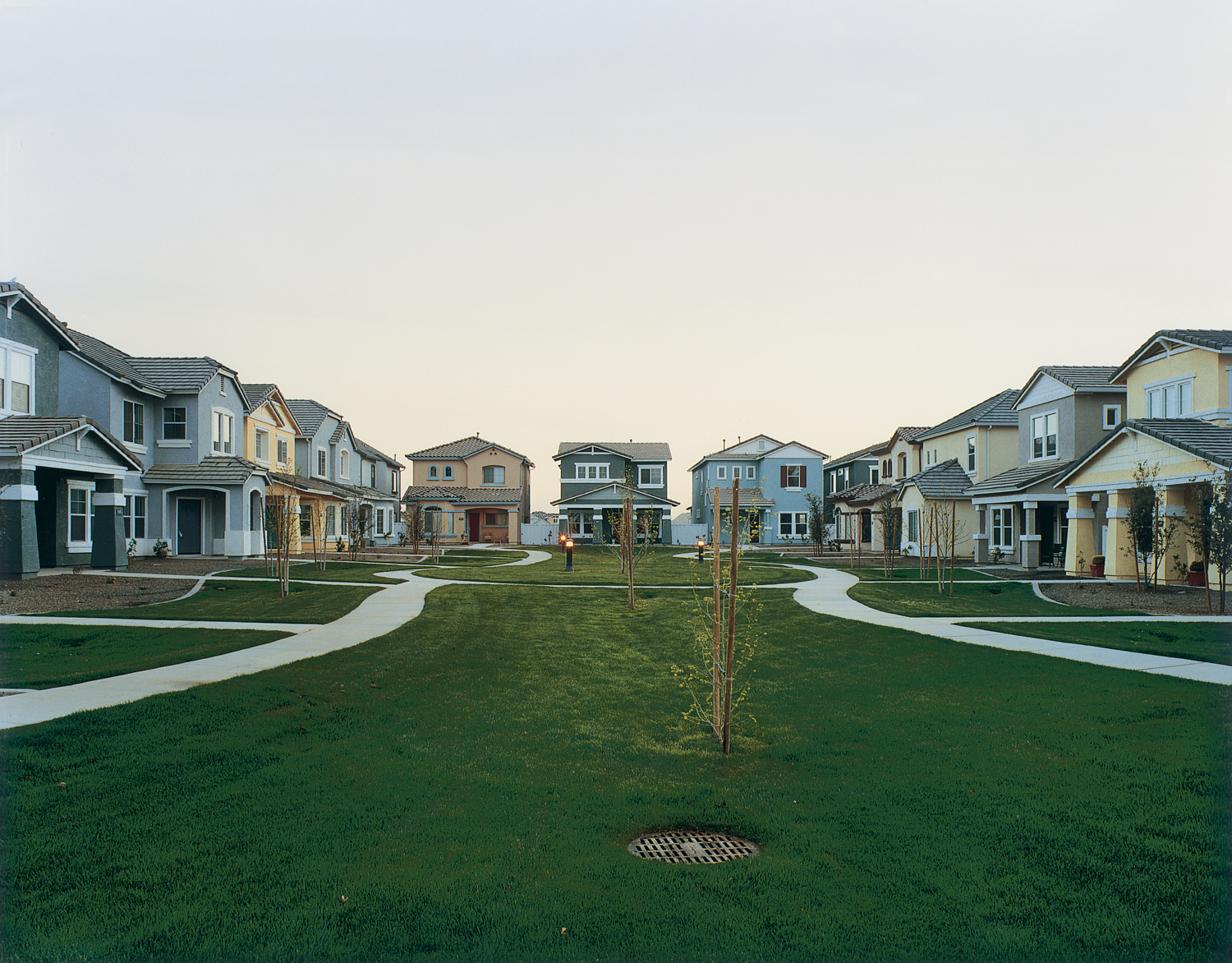




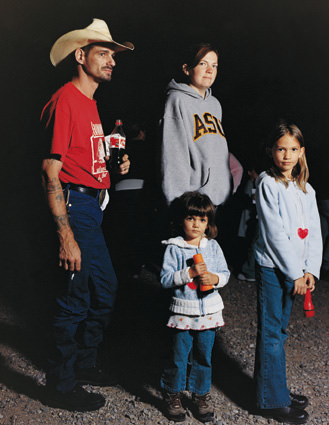
INTERVIEWS
WICHERT Magazin, Kunsthalle Mannheim
Interview: Renate Diehl und Stefan Karl
DAS KURZE LEBEN VON HIGLEY
WICHERT:
Herr Phelps, welche Beziehung haben Sie zu Higley? Ich lebe in Salzburg, bin aber in Arizona geboren. Meine Großeltern wohnten in Higley und ich genoss es als Kind auf den Feldern zu spielen. Den Ort Higley in Arizona, USA gibt es erst seit dem Zweiten Weltkrieg. Ursprünglich war dort eine Militärbasis mit Flugschu- le. Higley war früher nicht mehr als ein paar weit auseinander liegende Bauernhöfe und wenige Wohnhäuser. Anfang des Jahres 2000 begann die Stadt Phoenix immer näher an Higley heranzuwachsen. Higley wurde auf einmal eine angesagte Vorstadt mit ent- sprechend hochschnellenden Immobilienpreisen. Da sich dadurch die Grundstückswerte erhöhten, mussten viele Farmer ihren Grundbesitz verkaufen, da sie die nunmehr von der Stadt und Gemeinde geforderten hohen Grundsteuern nicht mehr bezahlen konnten. Sehr oft waren sogar Zwangsverkäufe und Zwangsumsiedlungen die Folge.
Wie kam es zu Ihrem Buch „HIGLEY“?
Auch meine Großmutter ist 2004 von Higley weggezogen. Als ich im Herbst meine Familie in Arizona besuchte, bin ich auch nach Higley gefahren und bin dort durch das leer geräumte Haus meiner Großmutter gegangen. In einem Zimmer stand an der Wand noch eine große Tafel mit Fotografien (Anm. d. Red.: im Buch Seite 9 ). Das waren private Fotos meiner Familie – ich war total überrascht diese dort noch vorzufinden. In dem Moment entschloss ich mich eine Fotoserie zu machen um aufzuzeigen, wie schnell Altes verschwindet – teilweise fast ohne Spuren zu hinterlassen – und wie das Alte mit dem Neuen zusammen stößt.
Welche weiteren Themen ergaben sich noch für Sie, während der Arbeit an Ihrem Buch?
Zum einen bemerkte ich, welche Faszination der Umgang mit der eigenen Familienge- schichte hat. Gerade durch das Zurücklassen der Fototafel wurde mir bewusst, dass sich die Wünsche der Mittelklasse, aus der meine Familie kommt, verändern. Diese Tafel war meinen Verwandten zu sperrig und zu alt um sie in ihren neuen Häusern aufzunehmen. Die Wünsche der Mittelklasse-Amerikaner gehen jetzt verstärkter in formschöne und perfekt eingerichtete Wohnungen und Häuser – auch ist eine erhöhte Wohn-Mobilität der Grund dafür, nicht mehr soviel aufzubewahren – sogar wenn es Familienfotos sind. Gleichfalls wurde mir bewusst wie gierig und gefräßig Großstädte sind. Phoenix wächst Flächen deckend in einem rasenden Tempo. Der Brief, den ich im Mai 2007 an meine Schwester in Higley gesendet habe, kam versehen mit dem Postvermerk „Ort unbekannt“ zurück. Higley ist nun nicht mal mehr als Name ein Teil von Phoenix – Higley ist komplett ausgelöscht. Die exklusiven Häuser, die jetzt in dem ehemaligen Higley stehen, haben alles verdrängt was vorher war. Es wird zwar mittlerweile versucht ein öffentliches Leben und ein Miteinander der Bürger aufzubauen – das Miteinander ist aber nicht gewachsen sondern imitiert und simuliert (Anm.: „Higley“ Seite 99).
Waren die Menschen in Higley bereit dazu vor Ihre Kamera zu treten?
Ich versuche mit meiner Kamera immer eine Geschichte zu erzählen und dies mit strate fotography – dokumentarischer Ähstetik. Meine künstlerische Handschrift ist: den Fotografen in den Fotografien nicht zu sichtbar zu machen. Die Menschen in Higley ha- ben sich nicht als Objekte gefühlt, das hat mir den Zugang zu ihnen und ihren Privaträu- men ermöglicht. Wir danken Ihnen sehr für das persönliche und interessante Gespräch.
HIGLEY
by Jim Casper
LENS CULTURE photo book review
Higley Anyone who has taken a road trip through the American Southwest has passed through towns like Higley: unlikely tough-scrabble little communities that crop up like weeds and cling to inhospitable territory, lingering, lonely, and surviving like a desert cactus.
Towns like Higley start out not even on the fringe of a larger metropolitan area. They exist seemingly in the middle of nowhere, and few people take notice that they are there at all. Like so many similar tiny pioneer towns in the Wild West, they attract and nurture quirky behavior, social misfits, outsiders, and quiet people who just like to get on with their lives with nobody near to bother them. There is little concern with status or conspicuous con- sumption. Architecture is shelter and not much more. Anonymous and unambitious, these places are dots on a map that you might miss if you blink as you blast past on a highway. Photographer Andrew Phelps grew up in Phoenix, Arizona. His grandparents, all four of them, had lived in Higley, quite a few miles east of the influence of Phoenix.
Phelps remembers childhood visits to Higley, where people farmed, and raised horses, and lived quiet, uninteresting lives. It was dull, hot, dry, lifeless and rather boring for a young ener- getic boy. S o, it was quite a surprise — and an intellectual disconnect — when Phelps heard by phone that his sister and her family had just bought a home in Higley. At the time, Phelps had been living in Salzburg Austria for several years, with his wife and family, and he could not imagine why in the world anyone, much less his sister, would want to stake a new life in Higley.
But then he understood. That sprawling monster of a western town, Phoenix, had steadily crept across the desert and was about to swallow up Higley as it continued to spread out like a fast-growing cancer. Phelps said, “What I didn’t know is that the turn of the [21st] century had changed Higley from a community of farms to a community of bedrooms … Higley supplied what progress demanded: great expanses of flatland and no historical infrastructure to stand in the way of the giant strip malls, fastfood chains, and freeway turnpikes that would become the brightly-lit circulatory system of this new, affordable Higley.” That’s when he felt compelled to go back home to document the changes with his 4×5 camera.
The result of the three-year project is a great photo book (part love story, part sociological documentation, part bemused amazement) that shows the transformation of an individual community that describes in a more general way the new face of the Ameri- can West.
Alec Soth writes, “Why do we take pictures? To preserve memories? Stop time? Tell stories? Andrew Phelps’ photographs of Higley, Arizona do all of these things. But most of all they make me want to go out into the world. Stripped of the usual tendency toward cynical sensationalism, Phelps’ pictures depict Higley with a mixture of clarity and affection. After looking at this remarkable book, I feel like going outside to chat with my neighbor.”
Lens Culture is happy to share a handful of the images from the book with you here. But to appreciate the richness of the story, and the beauty of the photos, buy a copy of the book, and enjoy it in a slow, leisurely way.